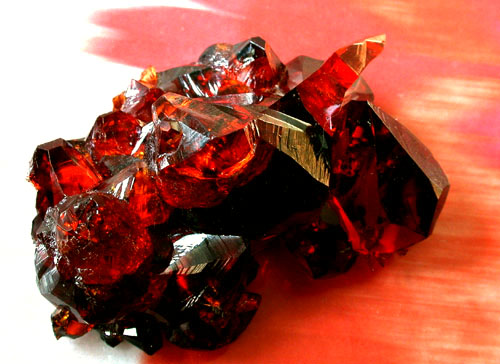My last rock story. Today if only the sun would cooperate I could finish the photos of the mineral collection and finally put this show on the road. There’s a metallic taste in my mouth and I find looking at the last broken and browned leaves of Fall outside to be a soothing counter-point to immersion in such vivid greens and blues and pinks and purples, oranges and golds and clears.
I measured my pyrite cube and found that it’s not a perfect square that it appears. Still, it’s close enough that when I showed it to my brother years ago, he didn’t believe it was natural – how can anything in nature follow such perfect lines? Today through an understanding and study of fractals we know that there is more of a pattern to nature than is apparent to the naked eye.
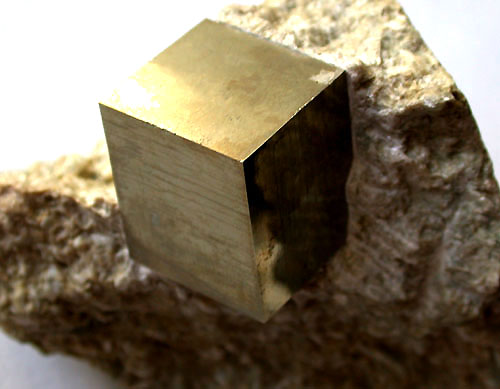
In fact, crystals of a specific mineral usually grow in precise patterns that are known as the crystal’s habit, a primary identifier of the mineral. For instance, Vanadinite has a very distinctive habit and color that make it quite easy to identify.
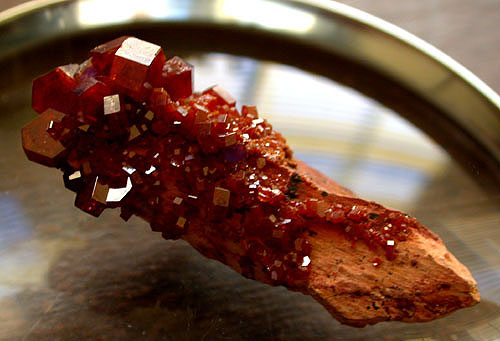
However, the appearance of consistency and pattern in nature is really an illusion; a trick to make us think we have the answers. Just when we think we’ve found the key to understanding it, nature changes. We’re then left grasping at our tattered assumptions, gazing in bewilderment at our math where two plus two does not equal four. We learned a lesson about this from the sun this week – if something so primal to our lives can suddenly change behavior, what can we depend on? Do you feel your world rocked?
Barite can be clear and precise and ordered, and there is serenity in its clean, uncluttered lines:
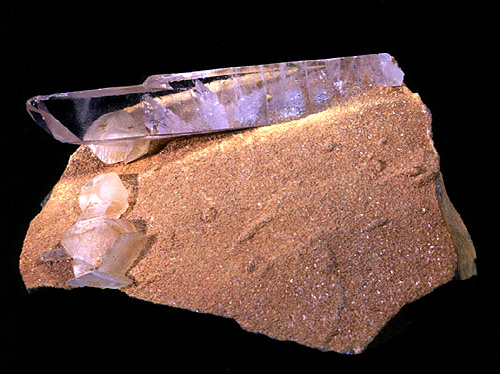
But it can also be yellow and chaotic, with growth in every direction. Look at the following photo – how can we believe that the mineral that formed the elegant bit of clarity above is the same mineral that formed into the messy and inconsistent crystal shown below?
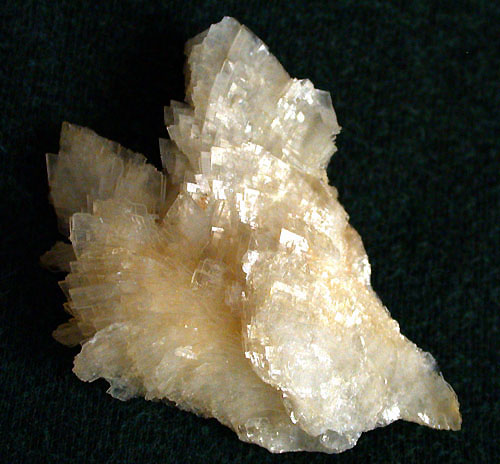
Still, if a crystal can have many forms and colors and shapes and textures, there is a finite limit to its variety. Dioptase will never be red, and molybdenite will always be metallic. It is this limit that now leads me to believe that one of my samples, a lovely bit of orange-red and clear crystals, may be a fake. I cannot find a mineral that matches the color, the weight, and the shape – all three.
By color it could be realgar, but the shape is wrong; by luster it could be spinel, but the shape is wrong; and by weight it could be rhodonite – but the shape and size doesn’t fit any of these.
It is driving me mad.
It’s a pity my pretty orange rock refuses to be classified, to fall into neat little patterns of mineral behavior: this color and this luster and this crystal shape and gravity. There’s no room in the collection for mystery.
